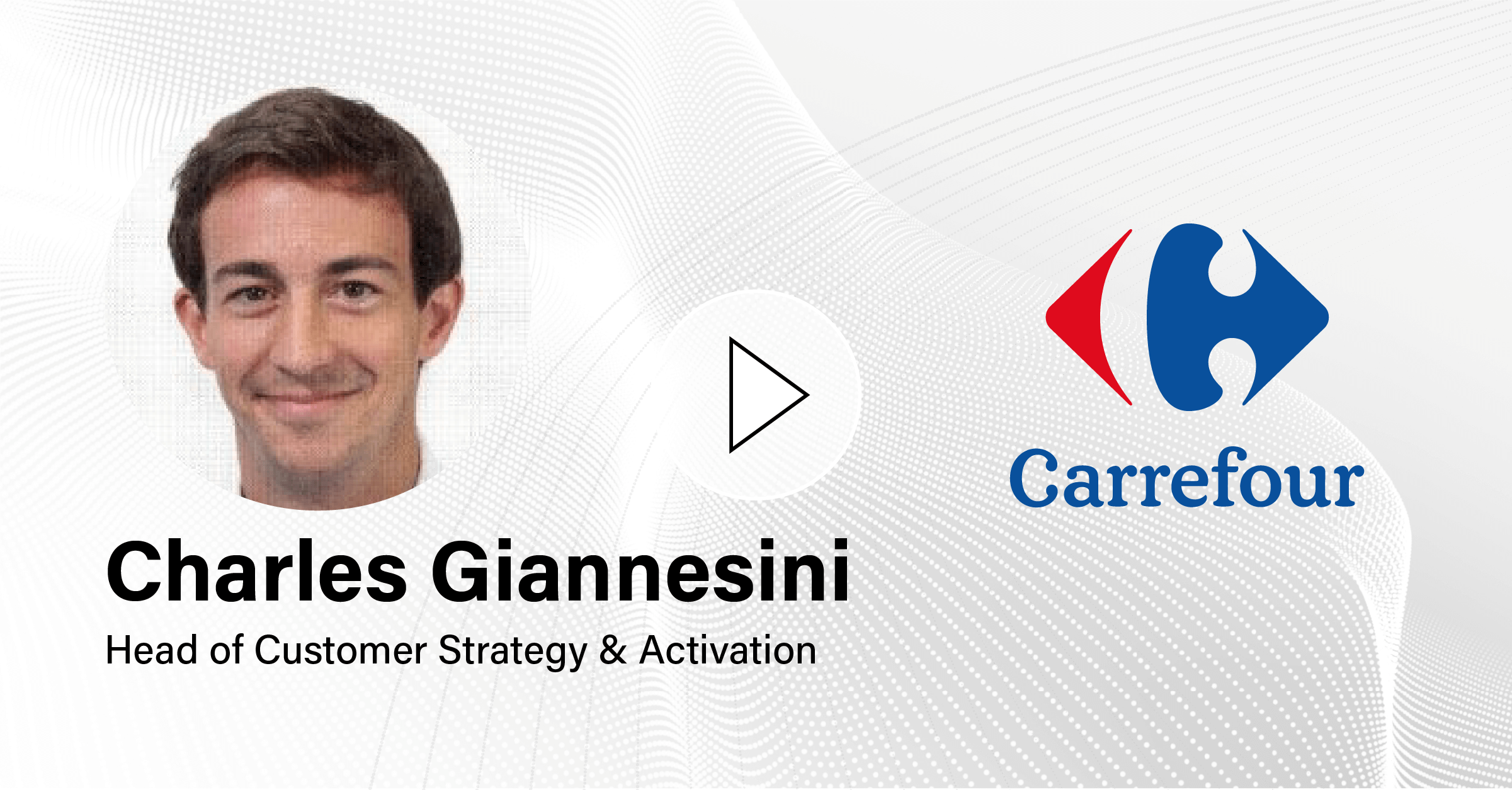April 18, 2019
Are You Pigeonholing Your AI?

Using AI in marketing isn’t news. It’s been used on everything from automation to copy for years. Though the technology is still in its infancy for some brands, others from Fortune 500 to emerging, forward-thinking businesses are re-assessing how they are using it as they continue to fine-tune their marketing machine. They are discovering it cannot be siloed to individual touchpoints — that leads to inconsistent customer experiences — and some platforms and methodologies are more sophisticated than others. Persado SVP of Customer Success Ryan Deutsch speaks with CMOs of some of the world’s biggest brands daily about their success with and needs from AI. He shared his thoughts on the present and future of the technology, as well as the questions marketing executives should really be asking as they evaluate AI.
What are the key signs it’s time to upgrade your AI?
Ryan Deutsch: It’s an interesting question because I don’t think in general, business leaders are thinking about upgrading AI. They’re asking, “Am I using AI? How am I using AI? Is the AI working?” To answer the question and get away from the buzzword, the real questions are, “Is it time for me to have a more sophisticated test-and-learn culture within my organization?”
What do you mean by that?
RD: Marketing leaders know they can do A/B or multivariate testing. They need to know that AI offers two specific enhancements. First, AI has a memory, the machine uses new data to build upon the insights and understanding of previous experiments. Second, AI can test more variants much more rapidly. The Persado message machine can test in one experiment the equivalent of hundreds of A/B or multivariant tests. The combination of memory and speed removes subjectivity from creative decision making. Marketers not only understand what content works best, they know why and can apply that insight broadly within a business.
And Machine Learning and AI help with that…
RD: Right. Marketers can see whether a product description, emotional phrase or call to action had the most impact on customers response. At the end of the day, it’s really about how committed leaders are to be data-driven in their decision making. Every CMO, Chief Digital Officer and CEO should be saying it’s time to upgrade. Otherwise, you won’t keep up with competitors. It’s just time.
There’s been talk about AI becoming a part of measuring digital marketing creative. Some may be skeptical though. Is this is a new capability?
RD: This one’s easy. Let’s just say as a digital marketing team we invest a ton of analytical thought in segmentation and pricing. In many large organizations, hundreds of people are working on those problems. With creative, there really isn’t a systematic tool or platform that reduces subjectivity and makes creative people better at their jobs. There are ways where creatives can get input, we have had focus groups for years but creative teams have never had support from an AI or machine learning perspective, so it’s massively disruptive. It’s very uncomfortable when Persado is first deployed in an organization because you hear things like the machine versus the creative team. “Who won?”
RD: As in, “Did the creative team win or did the machine … “
That just drives me crazy because you don’t hear the CRM team saying, “Who won? The CRM platform or the marketing team?” No one would ever say that. So if you go to Adobe Test and Target or Optimizely, which are running site experiments in eCommerce, people aren’t like, “Oh, look, Optimizely beat us, or Adobe Test and Target beat us.” Those are the platforms that the eCommerce teams are using to identify what’s the next best piece of content to put in front of a customer. So why is it so strange to say that, “Hey, there’s now a platform that can help us understand how content resonates with an audience and drive it forward?” It’s really an education problem because creative is not used to having technological or data-driven tools at their disposal. And by the way, it’s our fault as AI disruptors for letting the idea of “robots taking over the world” get out of hand. We’re not at the automated Tesla driving phase, right? That’s not where we are. We are simply at the, “Hey look, we can put cruise control on the car.” That should be much easier to digest and understand.
And how do these advances make marketers heroes within their organization and increase the department’s visibility?
RD: What we usually see is what I like to refer to as the “slaughtering of sacred cows.” Inside an organization, everybody’s an expert, especially when it comes to creative. Pre-AI, customers would hear in meetings, “This is not speaking to our brand or representing our brand. This isn’t how we talk to our customers. This doesn’t resonate with our audience.” Usually, these are incredibly subjective statements, and many of them come from senior leaders within organizations.
Tools like Persado that apply machine learning to marketing creative make marketers heroes because they can respond to that feedback with data. “I appreciate your feedback, but we’ve just run these multivariate experiments based on experimental design to understand how our concept resonates with our audience, and we are mathematically certain that this is the best way to engage customers. For example, we have learned that the simple decision to include a sale name like “Friends & Family” in a piece of content, negatively affects the performance of our program.” Now, that’s a sacred cow. Generally speaking, if you’re running a Friends & Family event for a retailer, and you don’t say Friends & Family everywhere, someone’s getting in trouble. My strong belief is that CMOs and CEOs are looking for people to tell them what they need to do better. They’re looking for people to bring data-based points of view to how they can improve business. Once you get through the initial shock of what the data tells you, you end up being a rockstar.
How can this help with career advancement?
RD: We see it all the time with our clients. People who are working with the tools that Persado provides are being promoted, or next thing you know, they’ve left and are now CMOs and Chief Digital Officers of other companies. And I’m sure part of their story is, “I disrupted the way content was created inside of my business, and these are the results.”
That’s awesome. Say, you’re a company with a CEO, CFO that doesn’t like to spend money. How do you get them on board with AI?
RD: My feeling is that most senior leaders are investors. They want to invest dollars that have a strong return and can scale. They aren’t looking for point solutions. They like to invest time and energy on things that, if they work in one; they can be applied broadly across the organization.
When machine learning or AI is being brought into a company, it can’t be pigeonholed. It should be tested across multiple parts of the customer experience with the purposeful intent that if it works, it will scale. One of the mistakes that we see people making is they implement these new technologies in a very small area, and they don’t share or create a vision around what to do next if AI works in that small area.
Such as email subject lines?
RD: Correct. Then, things die. They just test machine learning in email subject lines.
All of a sudden, you have this point of view it’s a machine learning tool for email subject lines. Except it isn’t. Not if you use Persado. You have a machine learning tool for language. Language is certainly more pervasive than a subject line. You have to build experiments and build a strategy that says, “I’m going to test this in a variety of places, and if it works, I’m going to scale it,” because that then drives the return that the C-suite needs in order to invest. If you don’t do that, you end up talking about immaterial experiments or immaterial technology deployments, which nobody cares about.
Can you speak to a brand that is using AI really well?
RD: Air Canada generated tens of millions of marketing messages for different marketing channels with Persado and used machine learning to understand what does and does not work with consumers at scale. Emotional language was the most powerful trigger of action (60%), and Persado was also able to show them how other elements, such as the call-to-action, formatting (stylistic elements such as bold font or symbols and emojis) and descriptions (such as a product offer) work. Because Air Canada has a data-driven understanding of how different words, phrases, images or even colors might resonate with consumers, they have this powerful teammate that is helping them provide relevant content to consumers and achieve brand and revenue growth.

